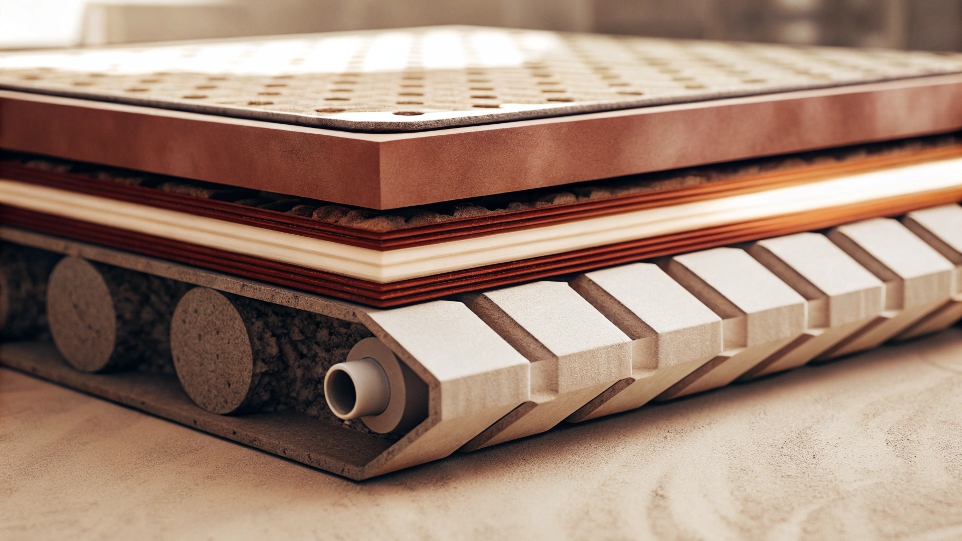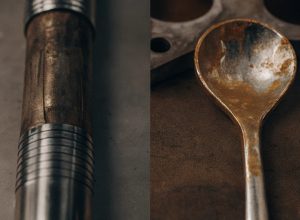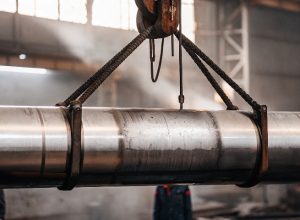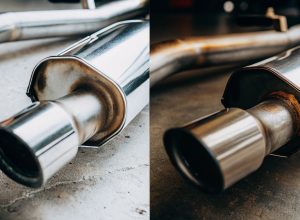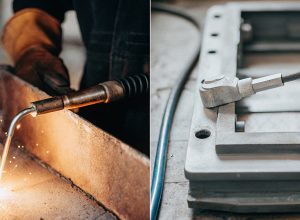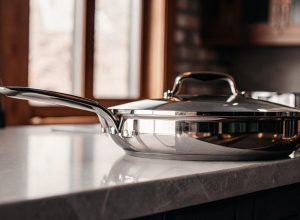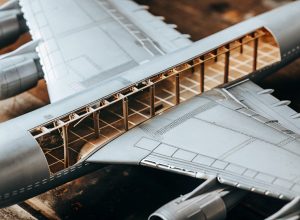Choosing the right material for military protection1 is critical. A wrong choice leads to vulnerability and wasted resources. Let’s examine if titanium’s strength makes it a viable choice.
Titanium is a fantastic material for armor because of its high strength and low weight. However, its very high cost means composite armors, like steel combined with ceramics, are often a more practical solution for large vehicles like tanks.
I often speak with product managers like Lisa, who need to balance performance with cost for industrial equipment. The challenges are surprisingly similar to those in the defense industry. You need a material that can withstand extreme conditions, but it also has to fit the project budget. This balance is key. Let’s explore how titanium fits into this equation for armor, starting with its current use in tanks.
Is titanium used in tank armour?
You hear about advanced materials, but what do modern tanks actually use? The answer can be confusing. Let’s look at where titanium really fits in on the battlefield.
Yes, titanium alloys are used in some modern tanks, but usually for specific, smaller components rather than the entire hull. It’s often found in upgrade packages or areas where saving weight is critical.
In my work at the plant in Baoji, we produce titanium alloys for all sorts of demanding jobs. While most of our Grade 5 alloy goes to aerospace or chemical plants, the principles are the same for military use. A client needs a part that is strong, light, and resistant to damage. In tanks like the American M1 Abrams, you won’t find the main body made of titanium. That’s still the job of high-hardness steel and composite arrays. But titanium has found its niche.
Where is it used?
Engineers use titanium for specific parts to reduce weight without losing protection. Think of things like:
- Commander’s and gunner’s hatches
- Appliqué armor plates (extra layers bolted on)
- Internal spall liners2 to protect the crew from fragments
I remember a project with a European client who needed a lightweight, corrosion-resistant frame. We recommended a titanium alloy. The thinking is the same for a tank hatch. Making it from steel makes it very heavy to open and close. Using titanium makes it much lighter and easier for the crew to handle, which is a big deal in a combat situation.
| Feature | Steel (RHA) | Titanium (Ti-6Al-4V) |
|---|---|---|
| Density | High (~7.8 g/cm³) | Low (~4.4 g/cm³) |
| Primary Use | Main hull, turret | Hatches, specific upgrades |
| Advantage | Low cost, well-understood | Excellent strength-to-weight |
| Disadvantage | Very heavy | Very expensive |
So, while it’s not the main material, titanium plays an important supporting role.
What is the best metal for tank armor?
Are you looking for the one "best" metal for tank armor? That search can be difficult because different threats need different solutions. Let’s redefine what "best" truly means.
There isn’t a single "best" metal. The most effective tank armors are composite systems. These systems use a combination of materials, like high-hardness steel, ceramics, and sometimes specialized materials like depleted uranium to defeat various threats.
This reminds me of conversations with Lisa. She’ll ask for the "best" titanium grade for a chemical reactor. The answer is always, "It depends on the specific chemicals and temperatures." The same logic applies to armor. You have to consider the threats. Modern tank ammunition comes in two main flavors.
Kinetic vs. Chemical Threats
- Kinetic Energy (KE) Penetrators: These are like giant metal darts, often made of tungsten or depleted uranium. They use pure speed and density to punch through armor. A very hard and dense material is needed to stop them.
- Chemical Energy (CE) Threats: These are projectiles like HEAT (High-Explosive Anti-Tank) rounds. They don’t rely on speed. Instead, they detonate on the armor’s surface, creating a super-heated jet of molten metal to burn through.
No single metal is great at stopping both. Steel is good against KE threats but can be defeated by CE jets. This is why modern armor is a sandwich of different materials. A hard ceramic layer shatters the KE penetrator, while spaced layers of steel and other materials disrupt the CE jet.
| Armor Material | Effective Against KE | Effective Against CE | Notes |
|---|---|---|---|
| High-Hardness Steel | Good | Fair | The baseline, cost-effective material. |
| Ceramics (e.g., Alumina) | Excellent | Good | Shatters incoming projectiles but is brittle. |
| Titanium | Very Good | Good | Lighter than steel, but very costly. |
| Composite Systems | Excellent | Excellent | The modern standard, combines materials. |
So, the "best" armor isn’t a metal at all, but a smart combination of materials designed to work together.
Would titanium make good body armor?
Needing personal protection without the heavy weight is a real problem. Heavy armor slows you down, but being unprotected isn’t an option. Let’s see how titanium helps solve this.
Absolutely. Titanium is an excellent material for high-performance body armor. Its great strength-to-weight ratio means it provides solid protection at a much lower weight than steel, making it ideal for special forces or police tactical units3.
The Grade 5 titanium alloy, or Ti-6Al-4V, is a product I work with every single day. We forge it, test it, and certify it for clients who need top performance. It’s the workhorse of the titanium industry. Its properties make it perfect for situations where every ounce matters, like body armor. When a soldier has to carry gear for miles, reducing the weight of their armor plates makes a huge difference in their stamina and mobility.
Balancing Weight, Protection, and Cost
While standard military body armor often uses ceramic plates (like SAPI plates), titanium offers a compelling alternative. Ceramic plates are light and offer great protection, but they can crack if hit and lose their integrity. A titanium plate can often withstand multiple hits.
Here’s how they compare for a typical rifle-rated plate:
| Material | Typical Weight | Multi-Hit Capability | Relative Cost |
|---|---|---|---|
| AR500 Steel | High (8-9 lbs) | Excellent | Low |
| Titanium (Ti-6Al-4V) | Medium (5-6 lbs) | Very Good | Very High |
| Ceramic (Level IV) | Low (4-5 lbs) | Poor to Fair | High |
I’ve worked with product managers who need to meet strict weight limits for their equipment. They choose titanium even when it costs more because the weight savings4 provides a critical performance advantage. It’s the exact same trade-off for body armor. For an elite soldier, that extra mobility and endurance is worth the cost.
Why is titanium not used in armor?
If titanium is so strong and light, why isn’t it the standard material for all armor? You hear about its amazing properties, so its absence can be puzzling. Let’s uncover the real reason.
This is a common misunderstanding—titanium is used in armor, just selectively. The main reason it isn’t used for everything is its extreme cost, which covers everything from raw material processing to the difficulty of fabrication.
The biggest hurdle for titanium has always been its price tag. When I’m quoting a project for a client like Lisa, the cost of titanium compared to stainless steel is a major discussion point. We have to justify the expense with performance gains. For a massive object like a tank, that cost becomes nearly impossible to justify.
The Breakdown of Cost
The high cost of titanium comes from two main areas:
- Extraction and Processing: Unlike iron, titanium is difficult to extract from its ore. The Kroll process, which is used to refine it, is extremely energy-intensive and slow. This makes the raw material itself many times more expensive than steel.
- Fabrication and Welding: Machining titanium is tough on tools, and it requires slower speeds than steel. Welding it is even more complex. It must be done in an inert atmosphere, usually using argon gas, to prevent it from becoming brittle. At our plant in Baoji, we have entire sections dedicated to these specialized processes. Building a whole tank this way would be incredibly expensive and time-consuming.
| Factor | Steel | Titanium |
|---|---|---|
| Raw Material Cost | Low | High |
| Machining Difficulty | Easy | Hard |
| Welding Process | Simple | Complex (requires shielding) |
| Overall Cost Index | 1x | 10x – 20x |
So, the decision not to build an entire tank from titanium isn’t about performance. It’s about economics. The small performance gain is not worth the massive increase in cost for such a large vehicle.
Conclusion
Titanium is a high-performance armor material limited by its high cost. Composite armor is the practical choice for tanks, while titanium excels in specialized roles like lightweight body armor.
-
Stay updated on the latest technologies enhancing military protection. ↩
-
Discover how spall liners protect military personnel from fragments. ↩
-
Explore the importance of body armor for tactical units in combat situations. ↩
-
Discover how reducing weight can enhance the performance of military equipment. ↩



